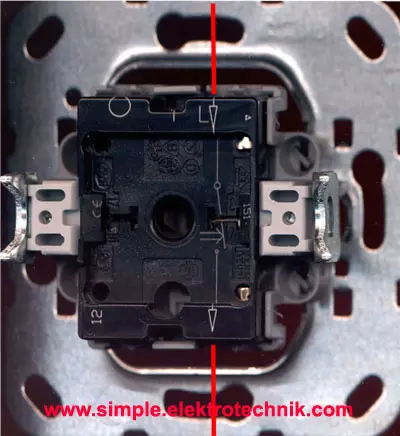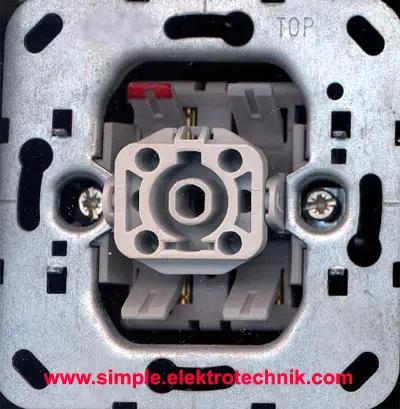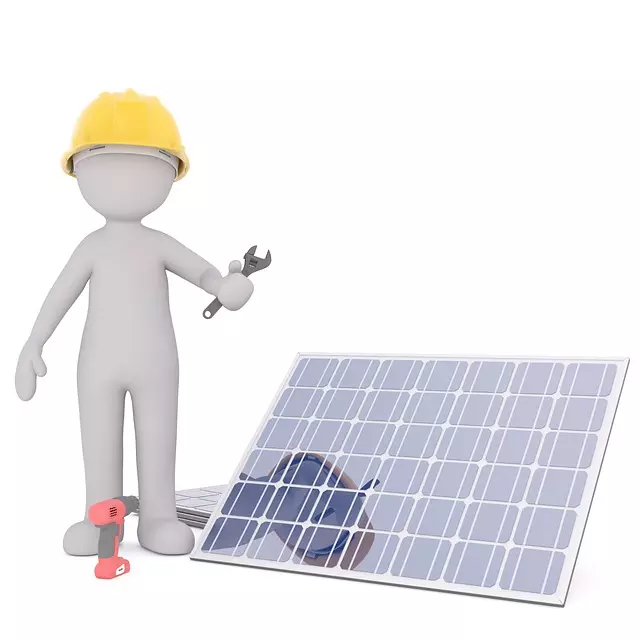Instructions for Installing and Connecting a Push Button:
A push button is another type of electrical switch used to temporarily close an electrical connection and open it again upon release. In contrast to a toggle switch, the push button has only two states - an "ON" state when it is pressed and an "OFF" state when it is not pressed. A push button is often used to trigger an action, such as ringing a bell or opening an electric door.
A typical example of using a push button is controlling lighting, for example, in staircases using a staircase automatic switch or a latching relay. When the push button is pressed, the lamp is turned on, and when pressed again, the lamp is turned off. Thus, the push button allows controlling the lamp from different locations.
Unlike a toggle switch, which has two switching positions, the push button is not limited to one or two switching positions as it is easily expandable.
Structure and Function of a Push Button:
The structure of a push button is relatively simple and typically consists of two terminals:
1. The input terminal, which is connected to the electrical circuit.
2. The output terminal, which is connected to the load or consumer.
A push button operates in a way that it does not create a permanent connection by default. When the push button is not pressed, the connection between the input and output terminals remains interrupted.
When the push button is pressed, a momentary connection is established between the input and output terminals. Once the push button is released, it interrupts the connection again.

- The input terminal (L)
- The output terminal (↓)
The push button can also be represented with a symbol resembling a simple circle with a line connecting the input and output terminals. When the push button is pressed, this line is momentarily closed.
In contrast to a toggle switch, the push button has only two states: an "ON" state when it is pressed and an "OFF" state when it is not pressed. When the push button is pressed, a short pulse of current is conducted as long as it is held down. There are two forms of push buttons: the normally closed push button and the normally open push button.
The normally closed push button closes the circuit when the push button is pressed, while the normally open push button opens the circuit when the push button is pressed.
Many switch manufacturers now offer push buttons that can function as both normally open and normally closed. This variant has two output terminals, one as a normally closed contact that closes the circuit as long as the push button is pressed, and the other as a normally open contact that opens the circuit as long as the push button is pressed.
Proper Connection of a Push Button:
Properly connecting a push button requires careful handling to ensure its correct functioning. A clear and understandable set of instructions is important for a smooth wiring process. Here is a simple guide for the correct connection of a push button:

- Remove the cover of the switch box where the push button is to be installed.
- Take note of the positions of the terminals on the push button. Typically, there are two terminals: the input terminal (L) and the output terminal (↓).
- Connect the live wire (phase) of the electrical circuit to the input terminal (L) of the push button.
- Connect the output terminal (A) of the push button to the load or the staircase automatic switch that needs to be controlled.
- Carefully check that all connections are secure and firm. Use appropriate connection clamps or screw connections.
Properly connecting a push button requires precision and adherence to a detailed wiring guide. By connecting the right terminals as per the manufacturer's instructions and establishing the correct connection to the lamp, you ensure the circuit works flawlessly. If unsure or in need of assistance, it is advisable to consult a professional to avoid potential errors.
Backside of the Push Button
Terminal for the Live Wire

Output 1
Front side of the Push Button

Instructions for Installing and Connecting a Push Button:

- Ensure that the power supply to the circuit where the push button is to be installed is turned off. Switch off the corresponding circuit breaker or remove the fuse.
- Take the push button out of the packaging and check if it is complete and undamaged.
- Remove the cover of the switch box to access the wiring.
- Identify the terminals on the push button. Usually, there are two terminals: the input terminal (L) and the output terminal.
- Check the manufacturer's circuit diagram to identify the correct connections. The input terminal is usually labeled as "L".
- Connect the input terminal of the push button to the live wire (phase) of the electrical circuit. Ensure that the connection is secure and firm.
- Connect the output terminal of the push button to the phase of the load to be controlled, such as a latching relay or a bell.
- Carefully check that all connections are secure and firm. Use appropriate connection clamps or screw connections.
- Securely attach the cover of the switch box back in place.
- Turn on the power supply by switching on the circuit breaker or inserting the fuse.
- Test the push button to ensure that it functions correctly. Turn the load on and off by pressing the push button.
If you are unsure or have no experience with electrical installations, it is advisable to seek the assistance of a qualified electrician to perform the installation correctly and safely. Safety always comes first.

Push buttons have various applications in electrical technology.
Here are some examples:
- Lighting circuits. Push buttons allow turning lights on and off from different locations.
- Staircase lighting. With push buttons, the light in different floors or sections of a staircase can be controlled.
- Corridor circuits. In long hallways or corridors, push buttons enable controlling the light from different positions.
- Circuits with multiple push buttons. In large rooms, push buttons are used to control the light from different switch positions.
- Outdoor lighting. Push buttons are used for controlling outdoor lighting, such as terrace or garden areas.
Push buttons offer flexibility and adaptability for controlling electrical circuits in various applications. It is important to proceed carefully when installing and wiring a push button and to follow the manufacturer's instructions to ensure proper functioning.
If you feel uncertain or have no experience with electrical installations, we recommend seeking the assistance of a qualified electrician to perform the installation correctly and safely. Safety always comes first.
Elektrosicherheit: Richtlinien und Vorsichtsmaßnahmen für einfache elektrotechnische Arbeiten
Die Sicherheit hat oberste Priorität.

- Alle hier bereitgestellten Anleitungen und Informationen dienen rein informativen Zwecken und sollen ausschließlich zur Informationsbeschaffung und Weiterbildung verwendet werden. Sie sollten nicht als Ersatz für professionelle Beratung angesehen werden. Bei Zweifeln empfiehlt es sich, einen qualifizierten Elektriker hinzuzuziehen, um fachkundige Unterstützung zu erhalten.
- Es ist wichtig, die örtlichen Vorschriften und Bestimmungen bei elektrischen Arbeiten zu beachten. Arbeiten mit Strom sollten nur von qualifizierten Fachleuten durchgeführt werden, da sie lebensgefährlich sein können.
- Fehler in Anleitungen und Schaltbildern sind möglich. Der Anbieter übernimmt keine Gewähr oder Haftung für Schäden oder Verletzungen, die aus der Umsetzung der bereitgestellten Informationen resultieren könnten. Es liegt in Ihrer Verantwortung, die Richtigkeit der Informationen zu überprüfen und die erforderlichen Sicherheitsvorkehrungen zu treffen.
- Die Verwendung geeigneter persönlicher Schutzausrüstung (PSA) ist entscheidend, um die Sicherheit bei elektrotechnischen Arbeiten zu gewährleisten. PSA schützt vor Stromschlägen, Augenverletzungen, thermischen und mechanischen Gefahren. Es ist jedoch wichtig zu beachten, dass PSA allein nicht ausreicht und durch Fachwissen, Fähigkeiten und die Einhaltung von Sicherheitsvorschriften ergänzt werden muss.
- Arbeiten an Teilen, die unter Spannung stehen, sind strengstens untersagt. Vor Beginn der Arbeiten müssen geeignete Sicherheitsvorkehrungen getroffen werden, einschließlich des Freischaltens der Anlage.
- Bei Schäden durch mangelhafte Elektroinstallation haftet der Errichter der Anlage gemäß den geltenden gesetzlichen Bestimmungen.
- Diese Zusammenfassung von Richtlinien und Vorsichtsmaßnahmen ist nicht umfassend. Bei Unsicherheiten ist es ratsam, einen qualifizierten Elektriker zu konsultieren oder sich an örtliche Vorschriften und Bestimmungen zu halten, um maximale Sicherheit zu gewährleisten.
- Die ordnungsgemäße Installation und Wartung von elektrischen Anlagen und Geräten ist von großer Bedeutung, um mögliche Gefahren zu minimieren und ein sicheres Umfeld zu schaffen.